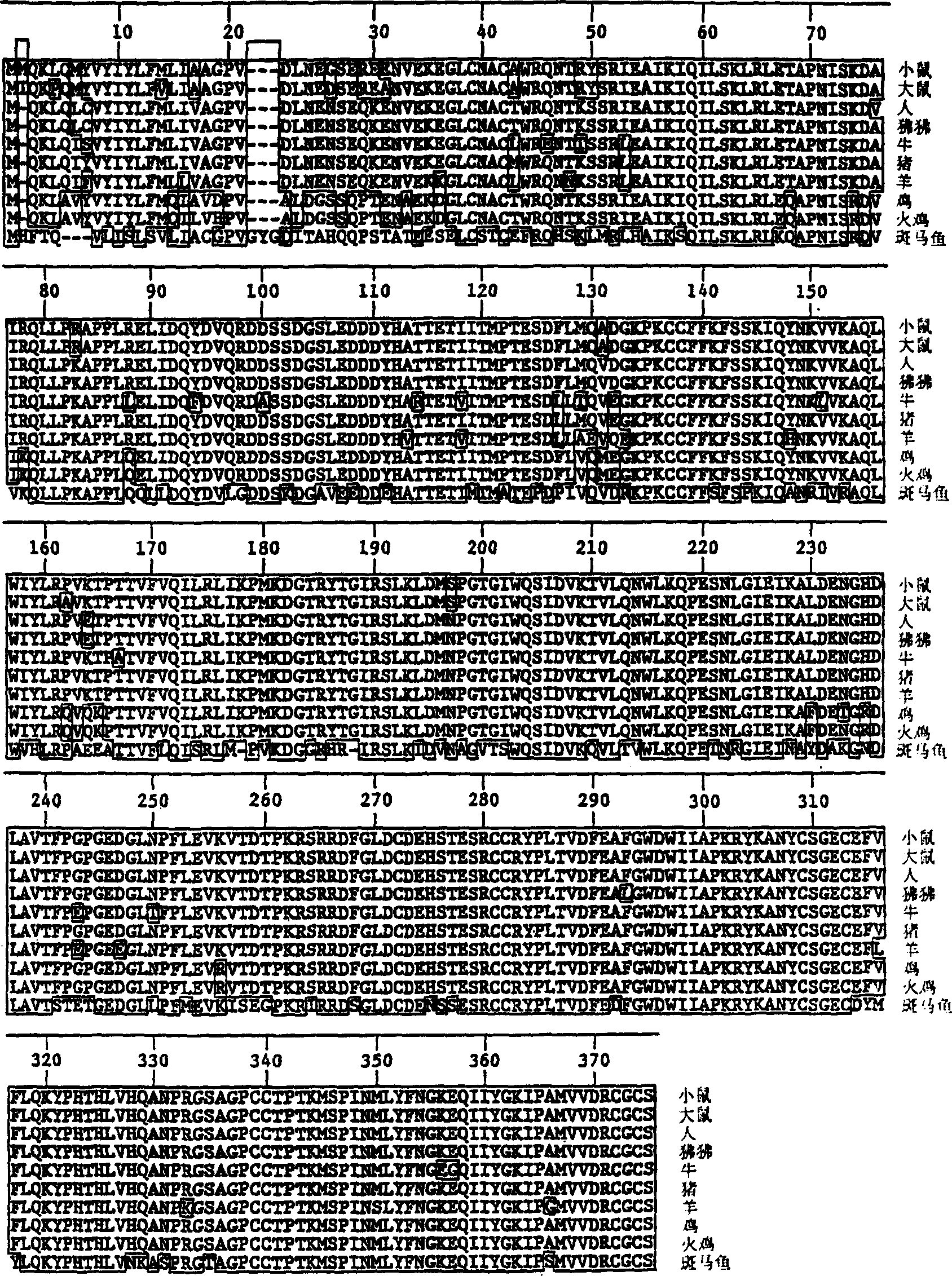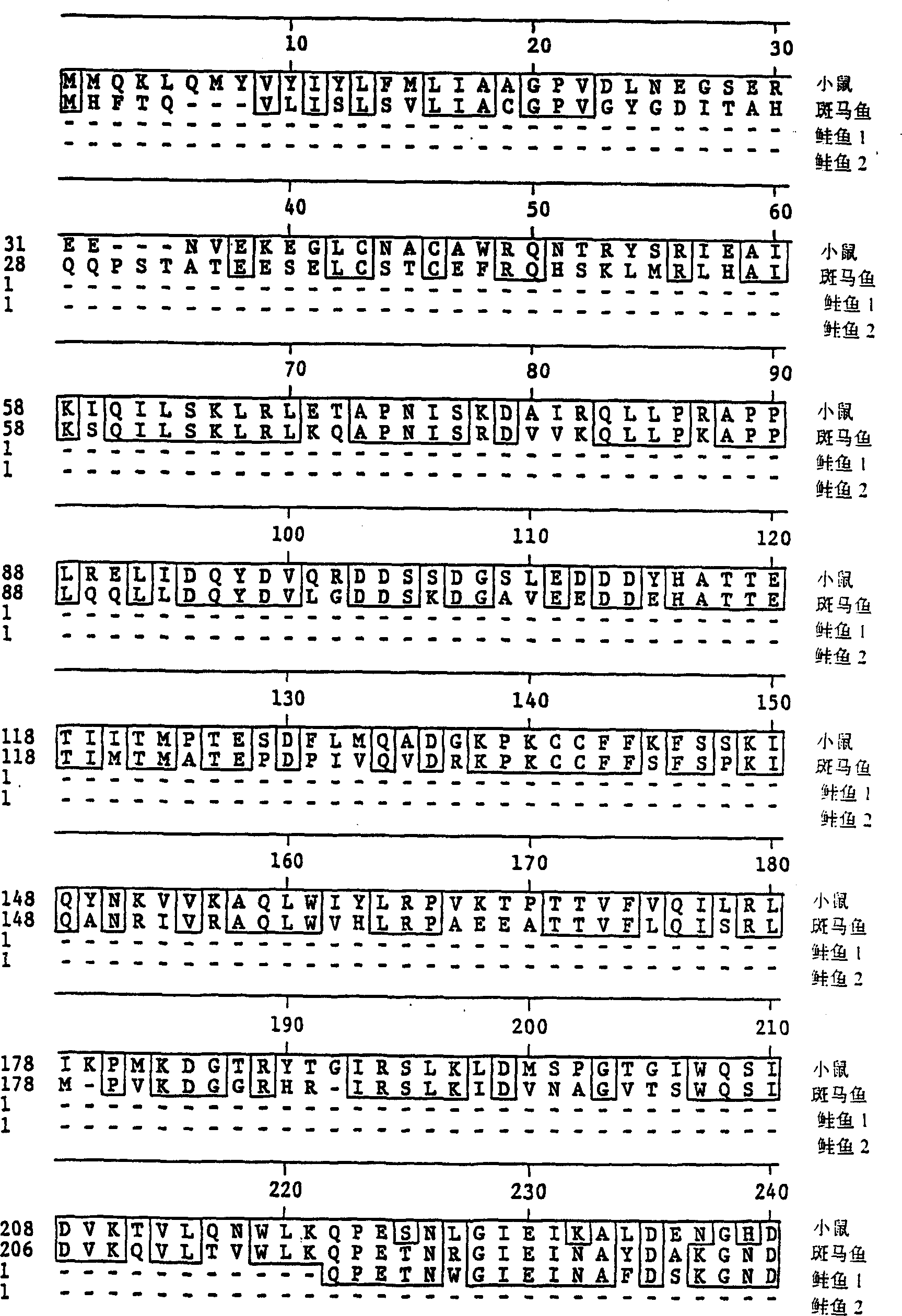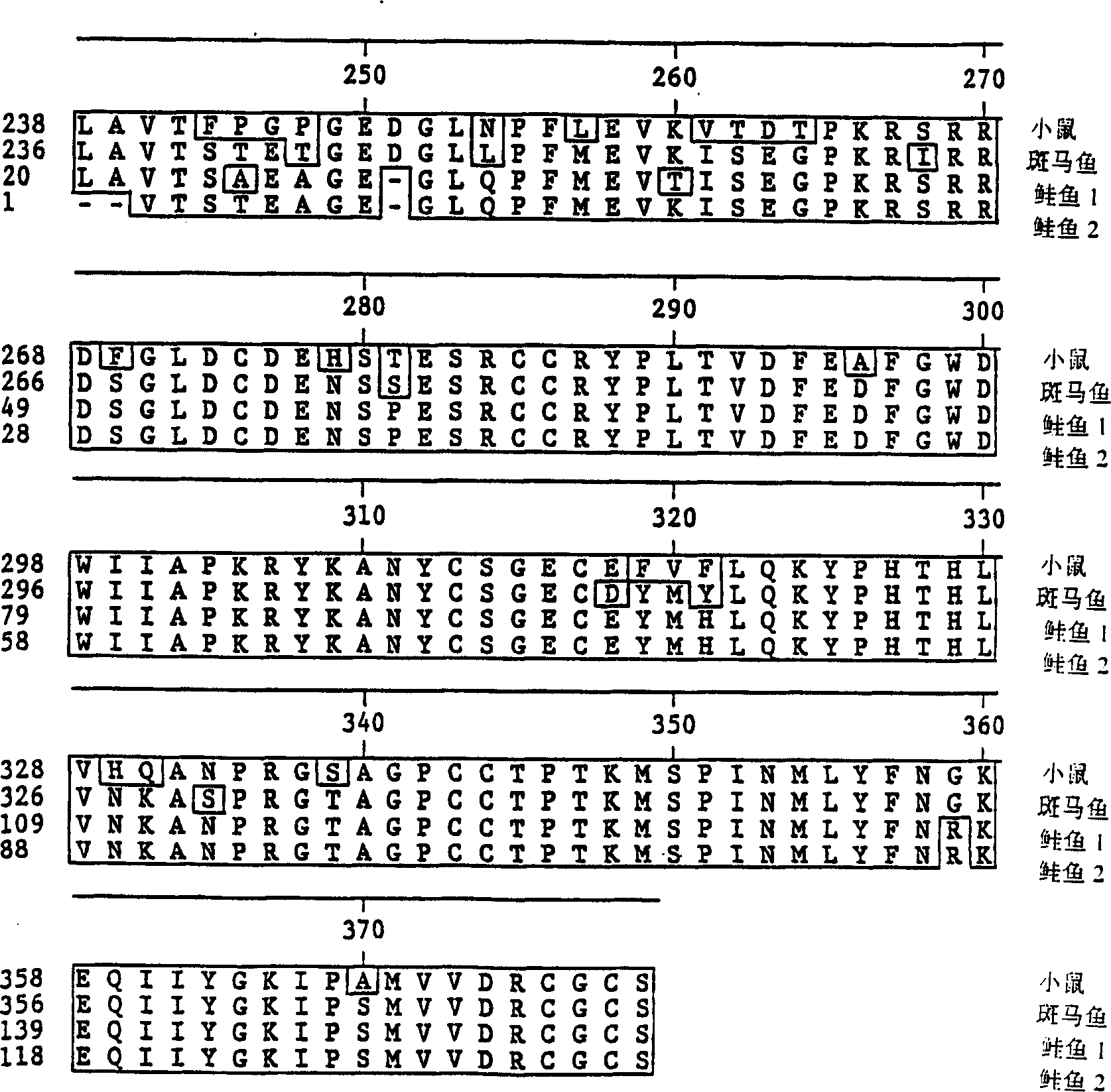Growth differentiation factor receptors, agonists and antagonists thereof, and methods of using same
A growth differentiation factor and receptor technology, applied in the field of GDF-8 receptor, regulating myostatin signal transduction in cells, and affecting the composition of myostatin signal transduction, can solve the problem of reducing food absorption The amount, the lean protein has not been achieved, the process is slow, etc.
- Summary
- Abstract
- Description
- Claims
- Application Information
AI Technical Summary
Problems solved by technology
Method used
Image
Examples
Embodiment 1
[0246] Myostatin acts in a dose-dependent manner
[0247] This example demonstrates that the activity of myostatin to inhibit muscle growth is dependent on the level of myostatin expression in vivo.
[0248] Myostatin is a negative regulator of skeletal muscle mass (McPherron et al., supra, 1997; McPherron and Lee, supra, 1997). Myostatin knockout mice, which are homozygous for the deletion of the myostatin gene, have a 25-30% increase in total body weight. Examination of homozygous knockout mice revealed that the increase in muscle mass was due to an approximately 100-200% increase in total body skeletal muscle.
[0249] Mice heterozygous for the myostatin mutation also had increased total body weight. However, the increase in heterozygotes was smaller than that in homozygotes, and only one age and sex group was statistically significant in many assays. To determine whether heterozygous mice had an intermediate phenotype between wild-type and homozygous mice, the analysi...
Embodiment 2
[0252] The effects of myostatin decline with age in knockout mice
[0253] This example demonstrates that the difference in body weight between wild-type mice and homozygous myostatin knockout mice is reduced along with a decrease in muscle weight in the mutant mice.
[0254] Myostatin knockout mice are approximately 25-30% heavier than wild type mice at 5 months of age (McPherron et al., supra, 1997). However, this difference in total body weight was significantly smaller or disappeared completely as the animals got older. To determine whether this effect was due to the relative loss of body weight in the knockout mice, because of, for example, muscle decline, or because the wild-type mice gained relatively greater body weight, muscle weight was analyzed in detail as a function of age.
[0255] At all ages examined from 2 months to 17 months, mice homozygous for the mutant had significantly higher breast muscle weight than their wild-type littermates. The most dramatic di...
Embodiment 3
[0257] Myostatin affects fat accumulation in a dose-dependent manner
[0258] This example demonstrates that myostatin knockout mice are unable to accumulate fat and that the reduction in fat accumulation correlates with the level of myostatin expression in vivo.
[0259] As shown in Example 2, wild-type and mutant mouse fat The amount of accumulation. Fat pads in the inguinal, epididymis, and retroperitoneum of male mice were examined. At 2 months of age, the weight of any of these fat pads did not differ between wild-type and mutant mice. By 5 to 6 months of age, both wild-type and heterozygous knockout mice had a wide range of fat pad weights, with an average, approximately 3- to 5-fold increase in fat pad weight by the time the animals reached 9- to 10-month-old. Due to the wide range of fat pad weights observed in these animals, some animals showed greater increases (up to 10-fold) than others.
[0260] In contrast to wild-type and heterozygous knockout mice, fat pa...
PUM
| Property | Measurement | Unit |
|---|---|---|
| Dissociation constant | aaaaa | aaaaa |
Abstract
Description
Claims
Application Information
 Login to View More
Login to View More - R&D
- Intellectual Property
- Life Sciences
- Materials
- Tech Scout
- Unparalleled Data Quality
- Higher Quality Content
- 60% Fewer Hallucinations
Browse by: Latest US Patents, China's latest patents, Technical Efficacy Thesaurus, Application Domain, Technology Topic, Popular Technical Reports.
© 2025 PatSnap. All rights reserved.Legal|Privacy policy|Modern Slavery Act Transparency Statement|Sitemap|About US| Contact US: help@patsnap.com



